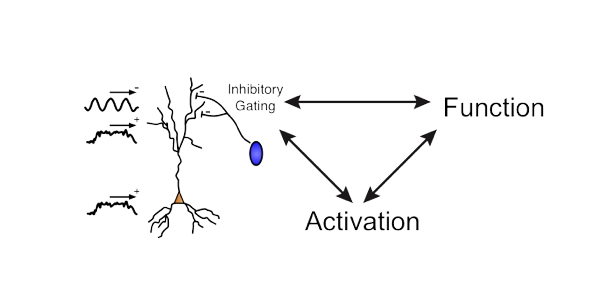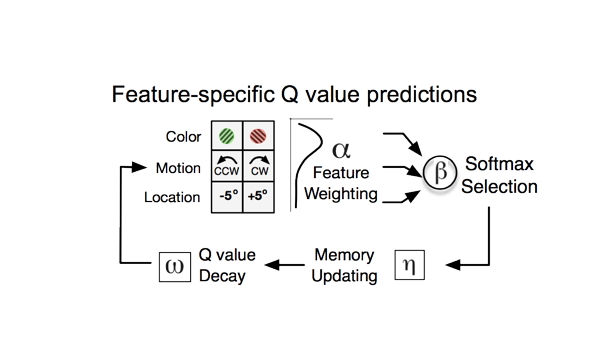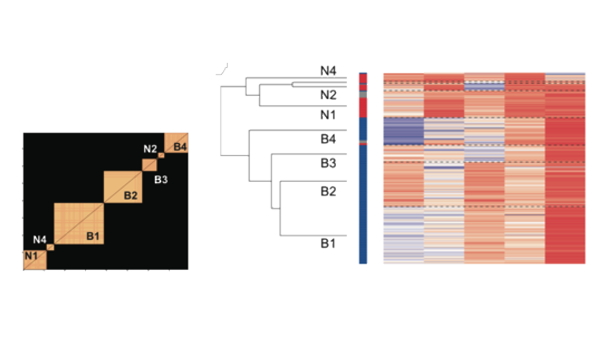– Analysis Code –
Many analyses in our lab embark on new territory with novel implementations of analysis routines and statistical testing. This site will organize some of these analyses in a ‘How-To’ or tutorial like style that provides (1) Background to an analysis approach, (2) specific matlab code showing the main steps to arrive at an analysis result, and (3) providing some outlook and links to outstanding questions related to the analysis.
The tutorials on this page extend and complement the tutorials of the basic analysis of spiketrain synchornization (using the pairwise phase consistency), the time frequency analysis of LFP and spike activity, and the functional connectivity analysis that are all described and explained in detail in tutorials at the fieldtrip toolbox website. Please see the matlab analysis links for these (openly available) toolbox tutorials.
-
 Quantifying phase-of-firing information gain during inter-areal spike-LFP synchrony: Set of analysis scripts to reproduce the main finding of the paper Voloh, Oemisch, Womelsdorf (2020). Phase of Firing Coding of Learning Variables in the Fronto-Striatal Network during Feature Learning. Nature Communications. The analysis pipeline applies glm analysis to spike counts at different phases of the oscillation cycle and quantifies the phase modulation depth of the glm-beta coefficients. Statistical approaches are included and described in full in the paper.
Quantifying phase-of-firing information gain during inter-areal spike-LFP synchrony: Set of analysis scripts to reproduce the main finding of the paper Voloh, Oemisch, Womelsdorf (2020). Phase of Firing Coding of Learning Variables in the Fronto-Striatal Network during Feature Learning. Nature Communications. The analysis pipeline applies glm analysis to spike counts at different phases of the oscillation cycle and quantifies the phase modulation depth of the glm-beta coefficients. Statistical approaches are included and described in full in the paper.
- Adaptive Spike Removal:Â
 Spikes introduce artificial phase lag to the LFP when they are recorded from the same channel. The scripts implement the adaptive spike removal method (ASR) that succeeds removing spike current leakage to the LFP across a broad range of frequencies. The details are described in: Banaie Boroujeni K, Tiesinga P, Womelsdorf T (2019) Adaptive spike-artifact removal from local field potentials uncovers prominent beta and gamma band neuronal synchronization. Journal of Neuroscience Methods. (doi.org/10.1016/j.jneumeth.2019.108485).
Spikes introduce artificial phase lag to the LFP when they are recorded from the same channel. The scripts implement the adaptive spike removal method (ASR) that succeeds removing spike current leakage to the LFP across a broad range of frequencies. The details are described in: Banaie Boroujeni K, Tiesinga P, Womelsdorf T (2019) Adaptive spike-artifact removal from local field potentials uncovers prominent beta and gamma band neuronal synchronization. Journal of Neuroscience Methods. (doi.org/10.1016/j.jneumeth.2019.108485).
-
 Detection of transient neural (burst) events: Matlab analysis toolbox for detecting and characterizing transient neural burst events. This burst detection toolbox allows using real or surrogate data for burst detection and offers a variety of different burst detection algorithms (magnitude- based, frequency- based, wavelet- based, …). The framework is actively developed and will be updated regularly to allow evaluating the sensitivity and specificity of burst detections.
Detection of transient neural (burst) events: Matlab analysis toolbox for detecting and characterizing transient neural burst events. This burst detection toolbox allows using real or surrogate data for burst detection and offers a variety of different burst detection algorithms (magnitude- based, frequency- based, wavelet- based, …). The framework is actively developed and will be updated regularly to allow evaluating the sensitivity and specificity of burst detections.
-
 State-space analysis of neural population dynamics: A Step-by-step How-To describing how to classify different experimental conditions from the dynamic changes in population firing of neurons using time-resolved principal component analysis (‘State-Space Analysis)’.
State-space analysis of neural population dynamics: A Step-by-step How-To describing how to classify different experimental conditions from the dynamic changes in population firing of neurons using time-resolved principal component analysis (‘State-Space Analysis)’.
-
 Cross-Frequency Coupling Analysis Methods: A step-by-step How-To for applying Tort’s Modulation Index and Eric Maris’ weighted phase locking factor method to identify correlations of phases and amplitudes between LFPs recorded from pairs of electrodes.
Cross-Frequency Coupling Analysis Methods: A step-by-step How-To for applying Tort’s Modulation Index and Eric Maris’ weighted phase locking factor method to identify correlations of phases and amplitudes between LFPs recorded from pairs of electrodes.
-
 Module Detection Algorithms for the classification of groups in multidimensional datasets: A Step-by-step How-To describing how to identify classes (modules) of similar behaving elements (nodes).
Module Detection Algorithms for the classification of groups in multidimensional datasets: A Step-by-step How-To describing how to identify classes (modules) of similar behaving elements (nodes).
-
 Classification of Cell Types using data-driven k-means clustering: This How-to shows how to find out how many reliably distinct clusters of cells can be identified based on a multidimensional matrix of parameters about the cells, including their firing rate, firing variability, bursting propensity, action potential waveform shape, etc.
Classification of Cell Types using data-driven k-means clustering: This How-to shows how to find out how many reliably distinct clusters of cells can be identified based on a multidimensional matrix of parameters about the cells, including their firing rate, firing variability, bursting propensity, action potential waveform shape, etc.
-
Decoding Neuronal Information about internal states (attention conditions) from neuronal firing rates. This How-to describes the sequence of analysis required to classify activations across multiple recorded neuronal activities according to internal states or task conditions.
-
 Analysis of Action Potential Waveform Distributions: This How-to shows how to extract parameters from action potential waveforms and how to test for bimodality of the underlying distribution with various measures.
Analysis of Action Potential Waveform Distributions: This How-to shows how to extract parameters from action potential waveforms and how to test for bimodality of the underlying distribution with various measures.
-
 Co-registering, 3D rendering + visualizing, and area labeling ECoG strip and grid data. This How-to Wiki outlines step-by-step on how to prepare electrode grid and strip data (from electrocorticographic ECoG recordings) into a format that allows plotting time frequency analysis and connectivity analysis results on a rendered brain with identified anatomical area labeling.
Co-registering, 3D rendering + visualizing, and area labeling ECoG strip and grid data. This How-to Wiki outlines step-by-step on how to prepare electrode grid and strip data (from electrocorticographic ECoG recordings) into a format that allows plotting time frequency analysis and connectivity analysis results on a rendered brain with identified anatomical area labeling. - 3D Image Material
This site will only infrequently be updated and not all links will be publicly open (you may contact us if you would like to get access to a locked tutorial).







